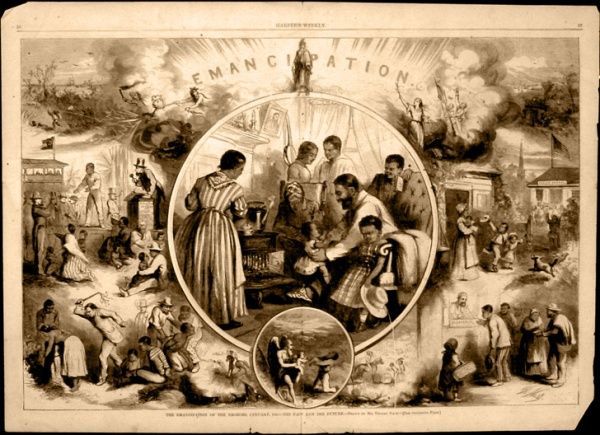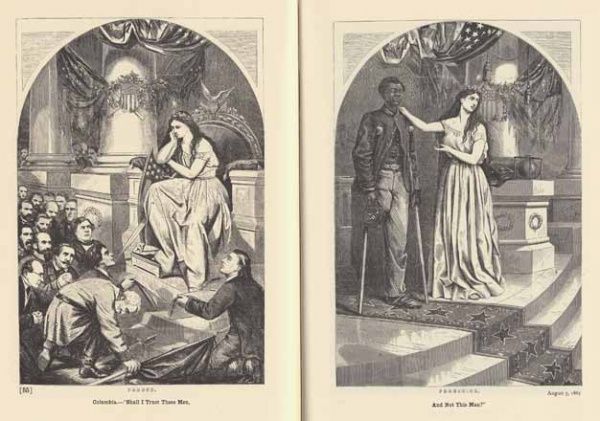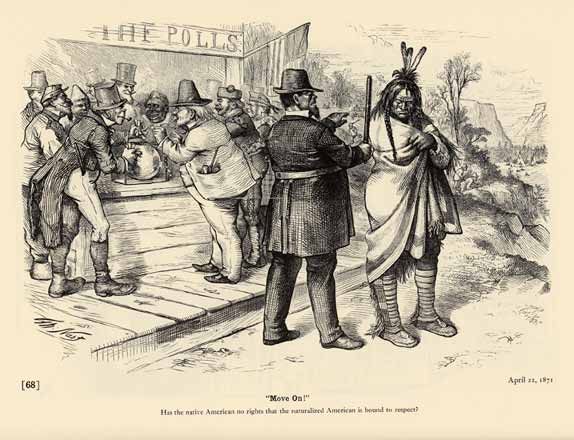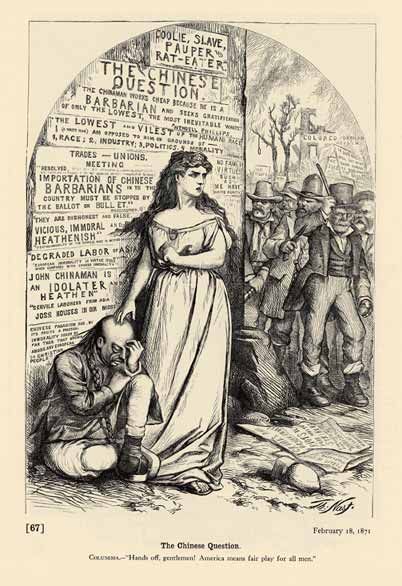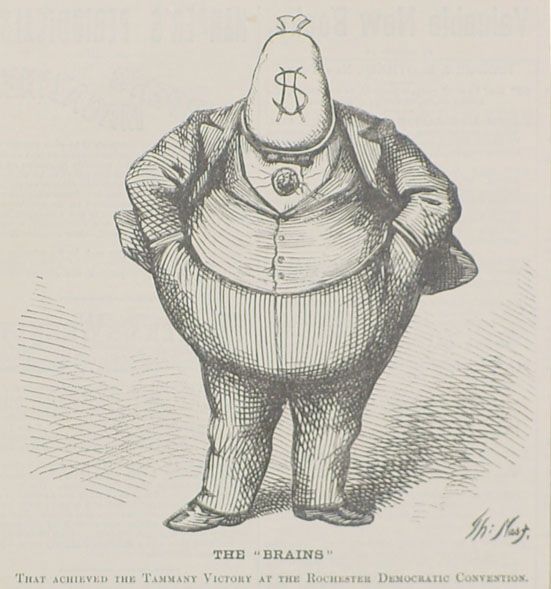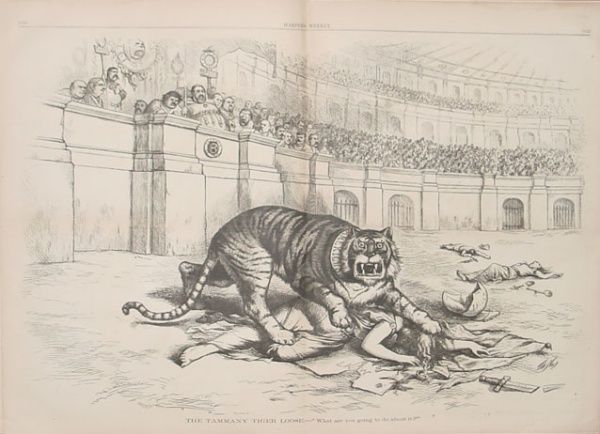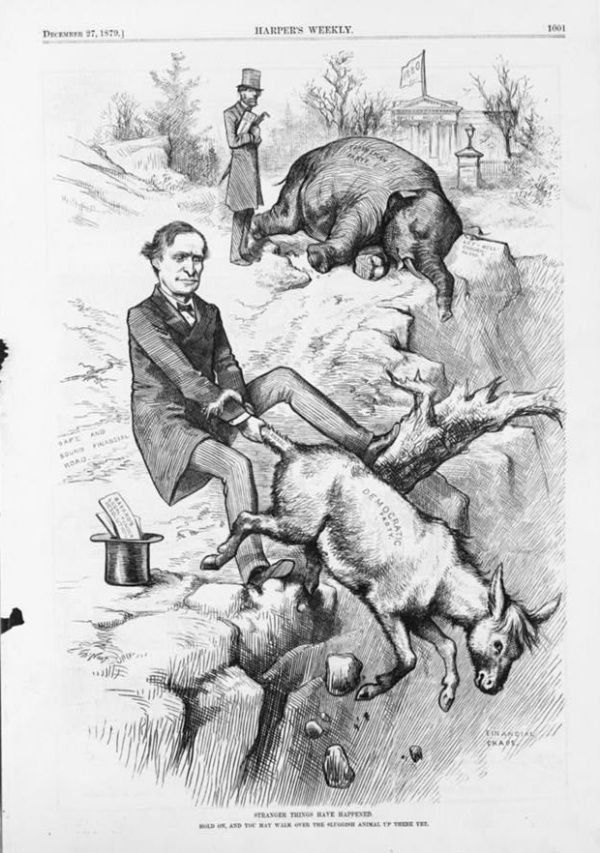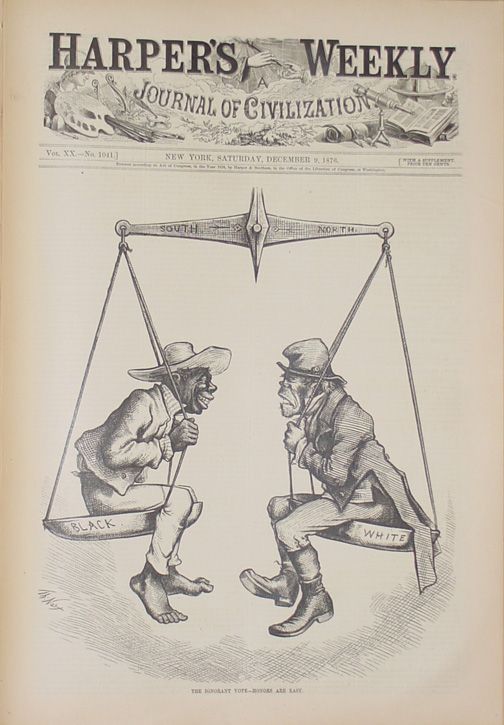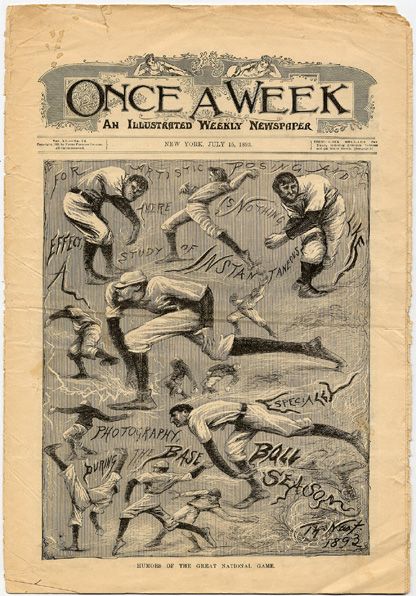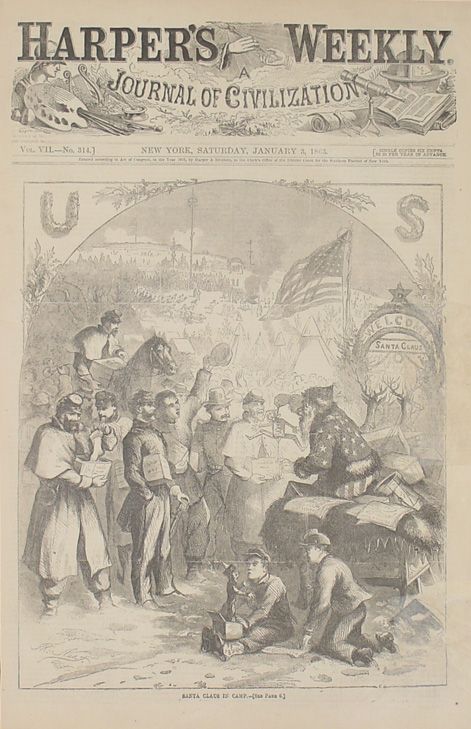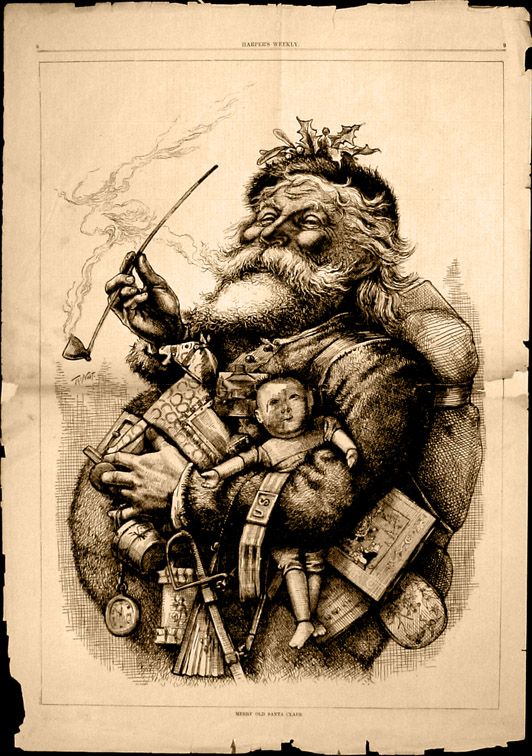While doing Month of Art Stars, I was going to feature a current political cartoonist that I dig, but then it occurred to me that it would be more fun to do a whole month devoted just to political cartoonists, so here you go - a month of some of the greatest political cartoonists who ever put ink to paper!
If you're doing a stars of political cartooning feature, there's really one name you MUST start with, so I did.
Enjoy!
Thomas Nast might not just be the most famous political cartoonist of all time, he is one of the most famous cartoonists PERIOD of all time.
Born in 1840, Nast immigrated to the United States from Germany as a young boy.
By his teenage years, Nast was involved in the blossoming periodical scene in New York City, which consisted of a number of newspapers and magazines.
In his early 20s, the Civil War became, naturally, the biggest thing in his life, and some of his earliest great cartoons detailed the devastating effects the war had back in New York, hunger-wise.
Soon, though, Nast would turn his pen towards the idea of civil liberties, with some beautiful work regarding the Emancipation.
It was Nast's coverage of the Reconstruction after Civil War that is most associated with Nast's legacy.
Nast drew attention to the plight of the disenfranchised blacks...
Columbia. -'Shall I trust these men, and not this man?'"
...Native Americans....
"Has the Native American no rights that the naturalized American is bound to respect,"
and Chinese immigrants...
Columbia. -'Hands off, gentlemen! America means fair play for all men.'"
But his most famous series of cartoons were when he went after William "Boss" Tweed, who held control of the New York Democratic Party (they were headquartered at Tammany Hall on 14th Street in New York City), and was certainly a major figure of corruption during the late 1860s/early 1870s.
Here are two of his more famous depictions of Boss Tweed and Tammany Hall (the Tammany Tiger)...
"The Tammany Tiger Loose- 'What Are You Going to Do About It?'
Tweed was to have said about Nast's drawings - "Stop them damned pictures. I don't care so much what the papers say about me. My constituents don't know how to read, but they can't help seeing them damned pictures!"
While for many years, Nast was a bit of an idealist and a fervent follower of the Republican party, as time went by, he became more and more disenchanted with politics, which led to his famous depiction of the Republican Party as a lumbering elephant and the Democratic Party as a donkey (Nast likely originated the donkey symbol in a piece he did years earlier, but the elephant image actually preceded Nast - he did popularize it, though).
Around the same time, Nast began to take a highly cynical look at the blacks and the Irish in America, as he looked at them as idiots who were being used by the respective parties...
Pretty harsh stuff considering some of his past work.
By his death in 1902, Nast was out of the political cartoon arena altogether.
Speaking of outside political cartoons, here is a great Nast cover of Harper's Weekly (the magazine he worked for for years) featuring that new-spangled sport, baseball...
And, as you may have heard, Nast also was the guy who came up with the popular visual for Santa Claus (the jolly old elf look).
Here is Santa Claus' first appearance, in a piece Nast did for Christmas during the Civil War...
And here is a much more detailed piece almost 20 years later...
As you can see, Thomas Nast was an important figure in American history, and certainly in comic history.
Thanks to Ohio State University for their great exhibit on Nast from a few years ago where most of these images came from.

